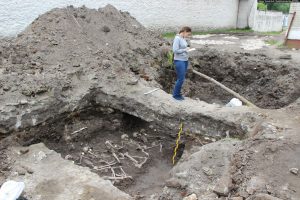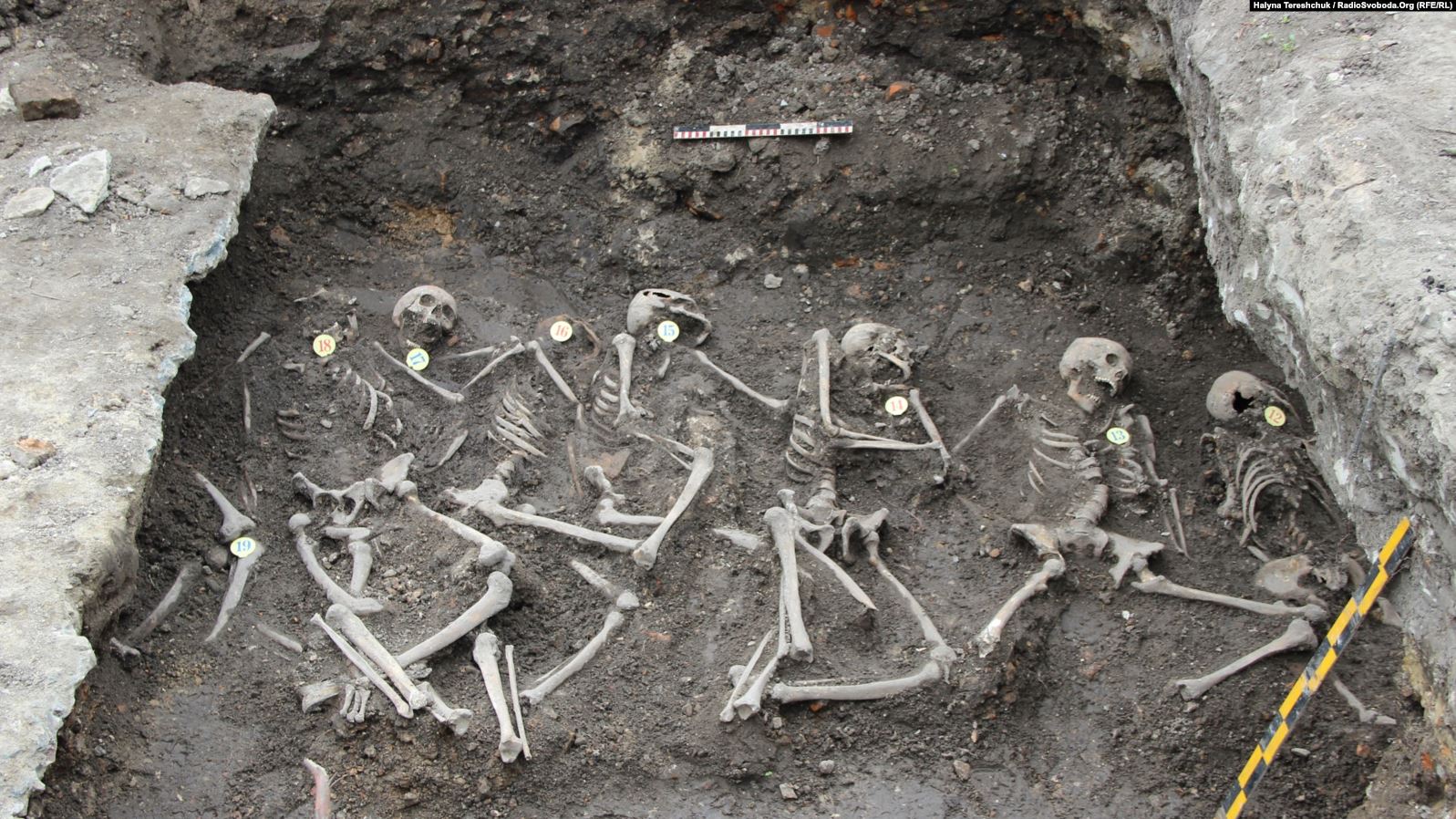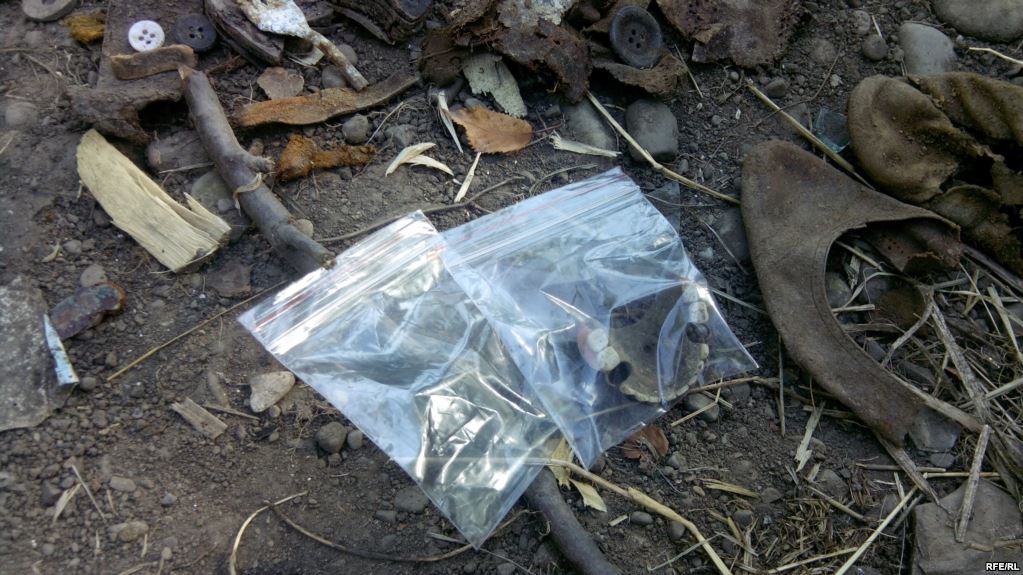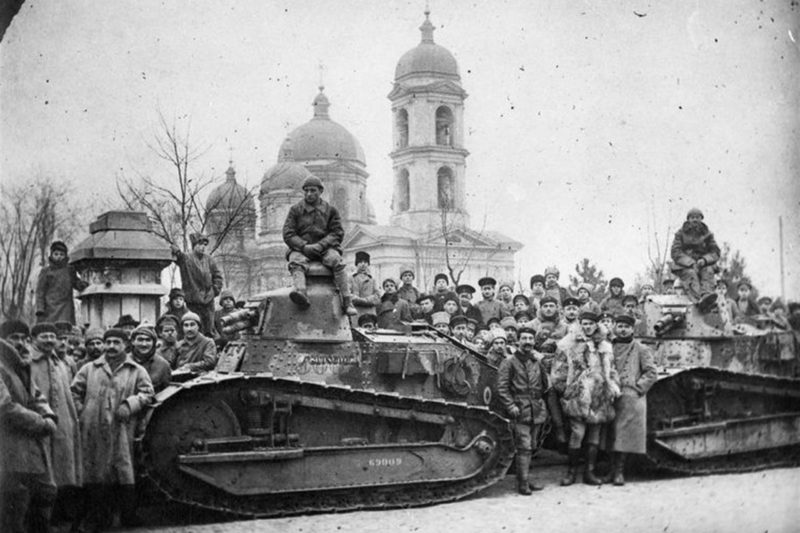The group discovered 19 bodies in a deep pit, not far from the prison wall. Among them: three women, the rest - men. Four victims were shot in the head. According to preliminary estimates of experts, the victims were not executed at close range. Various articles, such as boots, combs and buttons were found in the course of the excavation. The victims were laid out in a row, which suggests that they were not thrown hurriedly into the pits, says Olha Minenko, anthropologist at the Institute of Archaeology of the National Academy of Sciences.
“The human remains were buried with folded arms and bent knees, indicating that the bodies were interred three days after the actual execution. Closer investigations will allow us to determine what they ate, their body structure, perhaps their profession, while their bones will tell us what ethnic group they belonged to. As you know, this territory was populated by Ukrainians, Poles, Jews, as well as people of German descent.” asserted Olha Mineyko.

According to archival documents and photographs dating back to June 1941, local ethnographers led two investigations and gathered many testimonies from eyewitnesses who knew where the Dubno victims were buried.
“Judging by available archival documents, we believe that the photographs taken by German soldiers who arrived here and buried the executed prisoners are most valuable. It’s clear that the victims were interred in two uniform pits. We intend to continue our investigations in the area.” said Volodymyr Kharchuk, member of Dolia Search and Mamorial Centre.
The archival document of July 1, 1941 - Information on the burial of human remains on June 30, 1941 – was drawn up by the secret military police of the Wehrmacht’s 48th
Panzer Corps, which reported that NKVD authorities had executed 400 ethnic Germans and Ukrainians in Dubno prison.
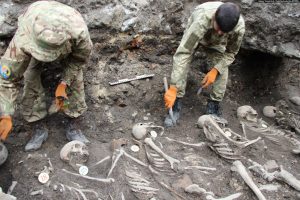
The German unit arrived in Dubno on June 26, 1941. Local residents testified to the Germans that about 400 political prisoners had been executed by order of NKVD Commissioner Vinokur in Dubno prison. On June 27, 1941, when German officers and soldiers entered the prison, they saw local residents searching among the bodies, identifying relatives and friends and taking them home for proper burial. Bodies lay everywhere - men, women, young girls - the prison floor was bathed in blood. As reported by local residents, not only did the NKVD execute their victims as quickly as possible, but they also brutally tortured the prisoners.
On June 30, 1941, several pits up to two meters wide and over a meter deep were dug in the prison yard, not far from the western wall. The head of Dolia Search and Memorial Centre Sviatoslav Sheremeta underlines that only one scenario was allowed in all the NKVD prisons – mass executions.
“This is one of the most extensive excavations conducted by our Centre. In June 1941, political prisoners interned in NKVD prisons all over western Ukraine were rounded up and hastily executed. The soviet military units were on the run, and the Germans were advancing. After analyzing old photo and the preliminary conclusion by the anthropologist, we can assume that these are the remains of prisoners tortured and executed by the NKVD, and buried in these pits under order of the German high command and thanks to the assistance of local residents.” said Sviatoslav Sheremeta.

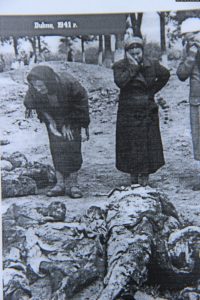
Excavations started in March this year. The number and nationality of the victims are unknown. According to documents and testimonies, the victims were Ukrainians and ethnic Germans.
Local ethnographers have been speaking about the barbaric events perpetrated by the NKVD in former Dubno prison for decades. Nine years ago, the Dubno City Council created a commission on declassifying events of the past. However, Mayor of Dubno, Vasyl Antoniuk, admits that there was a lot of talk, but little action:
“We wanted to access the archival documents and find out who was listed among the prisoners. But, this topic was taboo… We addressed the search centre in Lviv and started working with them. The situation is very complicated and painful. The entire territory is a cemetery. When we entered the cellar, we saw bullet holes in the walls and floor drains with traces of dried blood.” remembers the Mayor of Dubno.
Municipal authorities have filed a criminal complaint, which will allow for forensic medical examinations to be conducted on the site.
The Dubno City Council plans to build a memorial complex at the scene of the crime.
